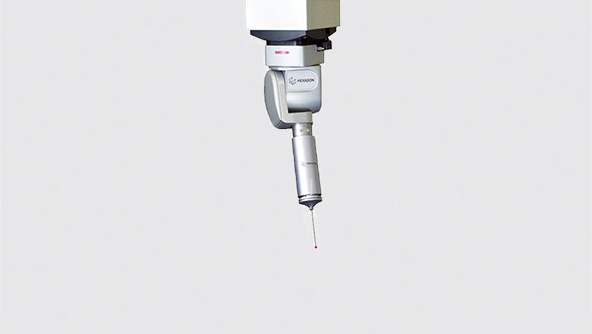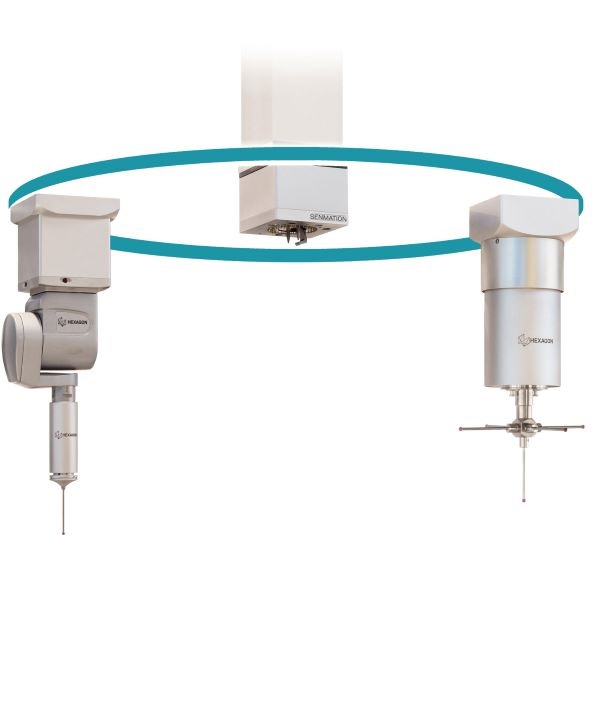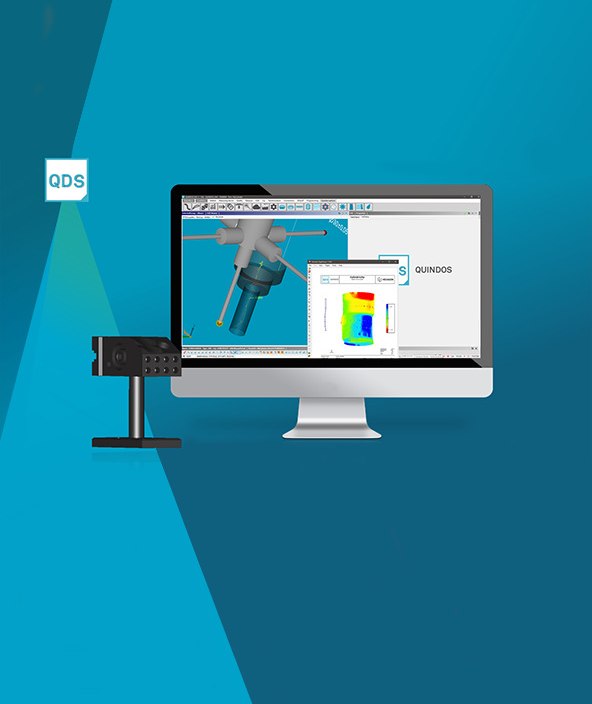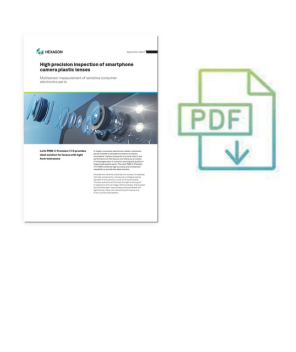High precision inspection of smartphone camera plastic lenses
Multisensor measurement of sensitive consumer electronics parts

Smartphone cameras comprise of a number of relatively intricate components. Lenses are an integral optical element of the camera, crucial to its functionality. The lens redirects and focuses the light bouncing off of objects to form an image. Without lenses, there would just be white light. Inaccurately produced lenses will significantly impair the camera’s performance and, in turn, product perception.
The problem for manufacturers is that lenses are a challenging and complex inspection application. Firstly, lenses are characterised by extremely tight tolerances. Even the smallest deviations can have a high impact on the lens, causing image distortions. Secondly, the size and relative fragility of these small plastic parts means they are susceptible to deformation when positioned for inspection. Thirdly, there is the intricate work of measuring the thickness of each thin layer within the lens.
As such, the optimal inspection solution needs to offer the utmost accuracy, plus sensor and fixturing capabilities that ensure the integrity of the part without damage. The Leitz PMM-C Precision 7.7.5, along with a range of compatible technology and software, more than meets these requirements.
A step above the rest
Leitz PMM-C Precision 7.7.5 is purpose-built to ensure the safe measurement of fragile parts like lenses. The machine is multisensor-ready, meaning a tactile probe can be used to ensure stable alignment of the lens, while non-contact measurement can be used to avoid part deformation.
The HP-S-X1C scanning sensor offers a low probing force to protect the lens when tactile probing is needed. With a small sensor spot size of 5 μm, the optical Precitec S0.3 offers high resolution scans of the lenses and detailed evaluation of form. To push efficiency further, the SENMATION SX automated sensor exchange system enables users to switch seamlessly between these measurement methods without manual interaction.
Supporting these high accuracy sensor options, the Leitz PMM-C’s closed-frame design and moving table ensure repeatable sub-micron accuracy. The machine’s active vibration damping system ensures stable measurement. In addition, the CMM’s relatively compact build offers a small footprint and makes it ideal for installation where there is reduced floor space.
Because lenses are usually evaluated according to defined mathematical equations, the metrology software needs to be sophisticated enough to perform these evaluations and accurately present measurement results. Hexagon’s QUINDOS enables users to not only leverage standardised evaluation methods but to adapt measuring programs to the specific needs of different types of aspheric lenses. Whether the lenses are symmetric or asymmetric, concave or convex, QUINDOS provides the optimum evaluation methods. To streamline interpretation of measurement results, QUINDOS can present the complete lens in 3D graphic plots, with colour-coded representation of deviations, 2D graphic reports to visualise the form deviation of the scanning line and a text/number-based measurement report.




